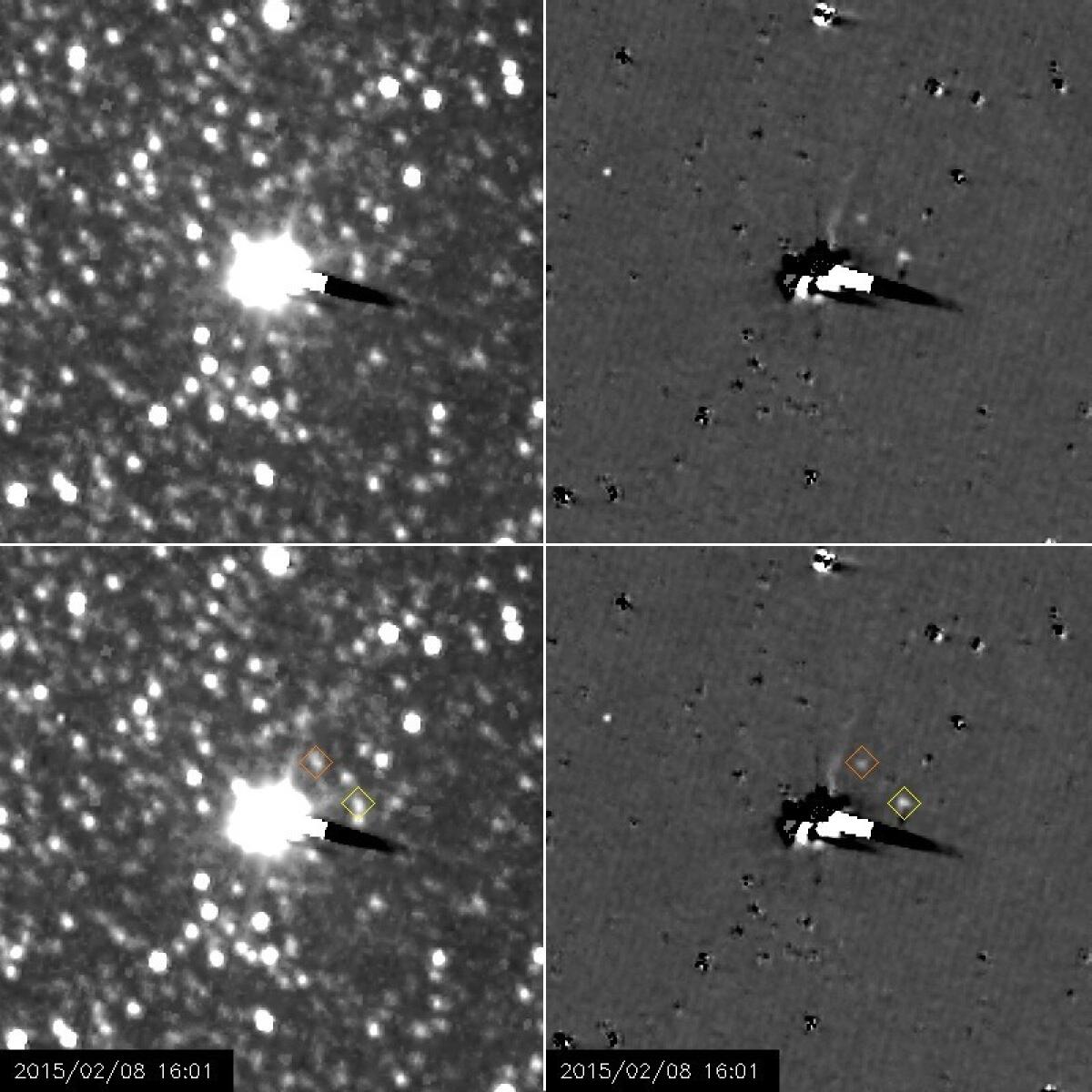Watch Pluto’s moons go: New Horizons captures Nix and Hydra in action

- Share via
Well hey there, little moons! In the home stretch of a 9.5-year journey, NASA’s New Horizons mission has caught two of Pluto’s lunar companions on camera as they circle around the dwarf planet. The images, made into a video, offer the first good view of Pluto’s small moons as the spacecraft homes in on the demoted former planet.
The two moons, Nix and Hydra, were spotted by New Horizons between Jan. 27 and Feb. 8, from distances of 125 million miles to 115 million miles. Members of the New Horizons team originally discovered the pair in images from the Hubble Space Telescope in 2005, and their names are partly inspired by New Horizon’s initials (N and H).
“It’s thrilling to watch the details of the Pluto system emerge as we close the distance to the spacecraft’s July 14 encounter,” science team member John Spencer of the Southwest Research Institute said in a news release. “This first good view of Nix and Hydra marks another major milestone.”
These moons are tiny, somewhere around 25 to 95 miles across, and pretty close in: Hydra, the outermost of five known moons, orbits every 38 days from about 40,200 miles away; Nix, in the middle of the pack, orbits every 26 days from about 30,260 miles away.
The images of Nix and Hydra were taken using the spacecraft’s Long-Range Reconnaissance Imager, or LORRI; each of the video’s seven frames is a combination of five 10-second exposures. The images on the right were processed to remove the glare from the starry backdrop, though some artifacts (including the streak to the right of Pluto) remain.
Pluto’s five known moons, in order of their distance from Pluto, are Charon, Styx, Nix, Kerberos and Hydra. The innermost is Charon, which is so close that it’s tidally locked with the dwarf planet; the pair always show each other the same face. It’s also the most massive, with half of Pluto’s diameter and roughly an eighth of its mass. Styx and Kerberos are too tiny to be seen yet, but they should appear as New Horizons nears Pluto in the coming months. (The spacecraft’s closest approach is currently set for July 14.)
While Pluto is a well-known figure in the solar system – and a controversial one, given its fall from planetary grace in 2006 – very little is known about this mysterious body, scientists say.
“Our knowledge of Pluto is quite meager,” planetary scientist Alan Stern, New Horizons’ principal investigator, said in an earlier story. “It is very much like our knowledge of Mars was before our first mission there 50 years ago.”
Follow @aminawrite for more science news from space.




